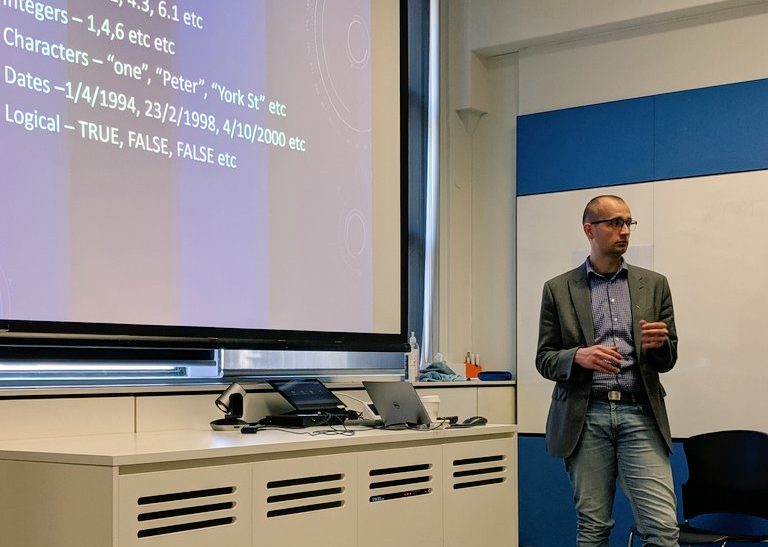Early in 2019 I posted a short ‘listicle’ with some of the key reasons I think Python and/or R should become essential tools in a modern policy analyst’s toolkit.
The full article is here, but the headline points in the article were; R programming’s use across disciplines fitting in well with multidisciplinary policy analysis teams; the greater reproducibility/transparency written code provides; and the practical advantages that can come from automating repetitive bits of policy analysis (such as reporting results of policy analysis across multiple scenarios).
While the article didn’t end in me getting a book deal, it did result in me receiving a surprising number of messages from people that were just as passionate as I am about the potential of R in the public policy world. At the same time, I also had a number of people asking me to put my money where my mouth is by showing them how it’s useful by teaching them.
So after being offered a space by the Microsoft Reactor in Sydney, I took up their challenge. Throwing together a course based on what I thought would be most useful based from my experience as a consultant/economist/policy analyst.

Running for an hour a week over four weeks it covered the basics of automating tasks, undertaking exploratory analysis, visualizing data and generating summary statistics in the context of answering questions as a policy advisor.
The course went well. So well in fact, that the most common request from participants in course evaluations were for future courses to be longer. I also found:
- The grammar of the Tidyverse made learning the basics much faster: I learned base R via an online series of courses and managed to learn the core principles of the Tidyverse in a little more than a day. For policy analysts/consultants it also made more sense, thanks to Tidyverse’s more intuitive grammar.
- People didn’t need a background in statistics to be able to quickly pick up the basics: the course was equivalent to a little over a full day of material and covered a lot of ground but everyone kept up. From past courses I’ve seen this isn’t guaranteed, so it was a pleasant surprise.
- Practice was preferred to theory: I wasn’t a straight A student, so I get this. But everything was picked up quicker if it was made relevant to the daily lives of participants rather than being draped in a purely theoretical framework.
- Pipes are confusing: This is contentious, but I remember feeling this way when I first started to learn R. I love pipes now, but people in my sessions preferred nested formulas. Trying to introduce it so early was just distracting.
- People loved data viz with ggplot: However, this was more because of ggplot’s ability to quickly segment and visualize data (such as through applying facets to demographic classifications) than quality of what it could produce. This makes sense given a large part of a policy analyst’s work is about exploratory analysis that is used to inform written recommendations, rather than being presented.
So where to from here? Well, outside of shamelessly rebranding my 2019 article for 2020, I’ve been convinced to develop a longer and more widely accessible online version of the free course to satisfy the demands from those that wanted to join but couldn’t due to time constraints or being in the wrong city/country:

Which is the second reason I wanted to write this up, as if you’re a fellow R/Python programmer in the policy/consulting space I’d love to hear from you to get your thoughts about what you think is useful. So if that’s you, feel free to drop me a line either via LinkedIn, Twitter or the contact form here.
And if you or someone you know is interested in signing up for the first run of the online crash course in R, you can do so via PolicyAnalysisLab.com
Leave a Reply